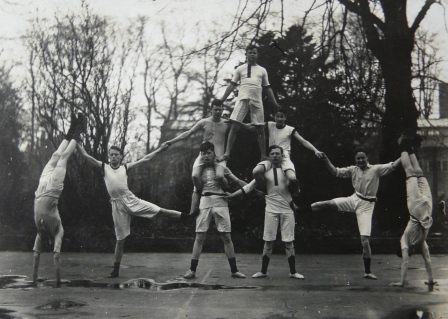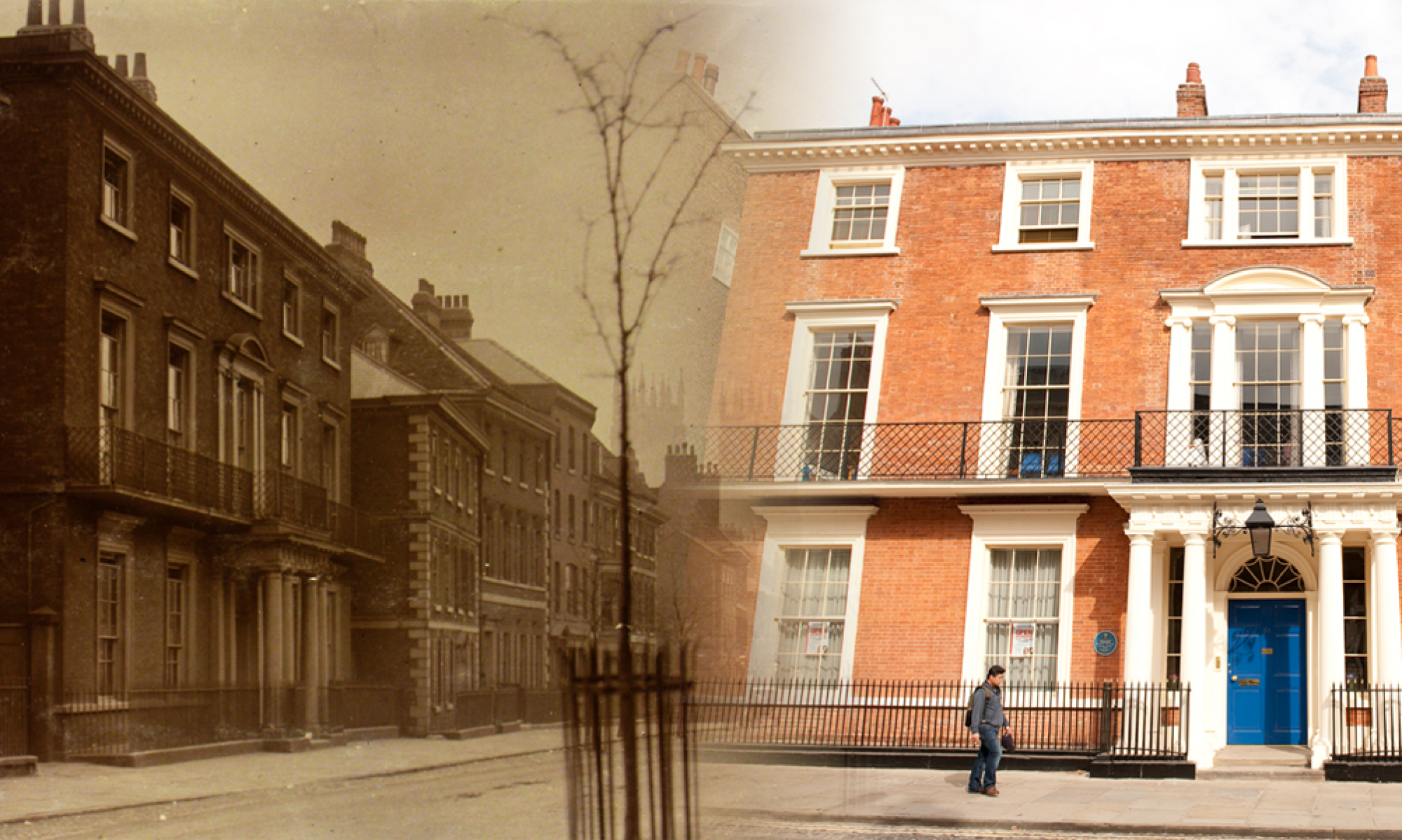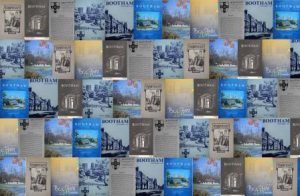Thanks to Claire Hicklin for researching and writing this post, based on a box of 19th century teaching materials and exercise books.
It made very interesting reading… Opening the archive box and finding Differential Calculus as the first topic to explore.
In 1857 – Senior Class Room a variety of working models and examples were available to explore along with detailed calculations relating to “Further Workings on Mechanical Illustrations”.
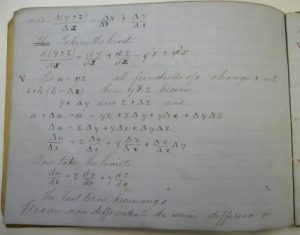
Beautifully written, these workbooks detail the thoughtful and intelligent application of a theory learned. It was interesting and insightful to read about working examples of Differential along with Integral mathematics methodologies.
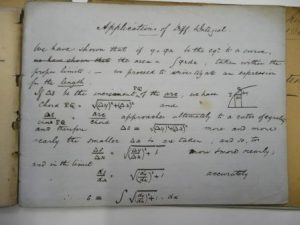
August 1838 – F.C Clayton wrote an “Expression of Taylor’s Theorem” In calculus, Taylor’s theorem gives an approximation of a k times differentiable function around a given point by ak-th order Taylor polynomial.
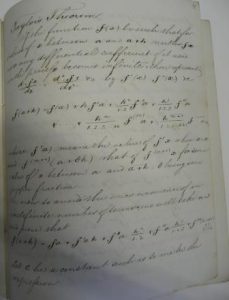
Another excerpt from F.C Clayton’s work asks the question “a person being in a boat 3 miles from the nearest point of the beach wishes to reach in the shortest time place 6 miles from that point along the shore. He can walk 5 miles an hour, but pull only 4. Where must he land?”
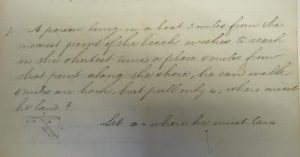
8th September 1854 – looking at Mr Clayton’s book below was fascinating, I confess, it took a while to work out exactly what was being detailed! A unique way of learning our Times Tables.
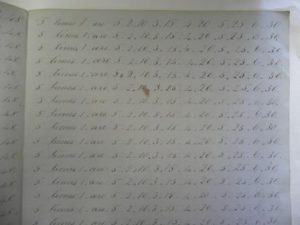
Mr Clayton (b1843, d 1928) went on to become a Manufacturing Chemist, Mayor of Birmingham 1889-1891), Pro. Vice Chancellor and Treasurer at Birmingham University, Governor of King Edwards Grammar School and awarded the Honorary Freedom of the City of Birmingham in 1912.
In 1855 Fielden Thorp wrote “generally any equation involving differential co-efficients is a differential equation, but in practice, we restrict the term to equations in which, as compared with the un-differential equations a constant has disappeared”.
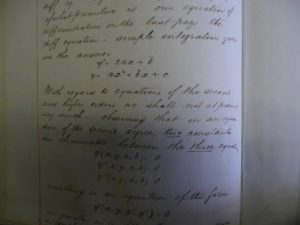
It was with interest I also came across the wonderful Hebrew workbook of Fielden Thorp dated 1833 – an excerpt reads: “But not withstanding all this, many of these Jews were found in exceeding trouble on account of the oppression with which the rich has oppressed the poor in the days of famine. There was agreed famine in the land a few years before Nehemiah came into the city and the poor who cultivated their grounds and their vineyards had not the means to buy seed for the year which came after the famine. And in this strait they came to the rich to ask loans from them. It was incumbent upon the rich according to the term of the law of Moses to loan money to their brethren without interest. They disobeyed this command and they oppressed the poor with interest and with usury.”
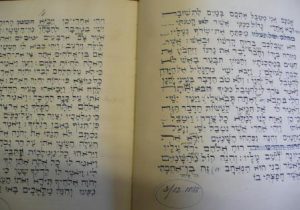
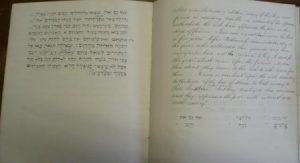
Fielden Thorp (b 1832 d 1921) was born in Halifax, received BA (Hons) Classics in 1855 and was a Fellow of the University College of London in 1856. Probably best known as Bootham School Headmaster 1865-1875.
A small undated green covered book produced some very interesting notes and education regarding land surveying. It appears to be instructions about how to survey and measure land accurately with detailed mathematical calculations. “To measure a mere or wood. Position cross at Station A and let your assistant fix the marks B and D so that the angle at A mat be a right angle, and measure the line AB taking insets to the fence as you proceed.”
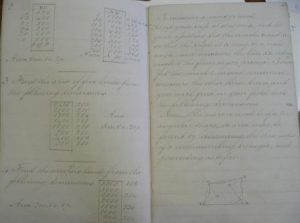
I somewhat fell in love with a little book entitled “A treatise on pneumatics” written and illustrated by Henry Seebohm who was around 10 years of age at the time of writing this fascinating account (in1842). He later became a steel manufacturer at Seebohm and Dieckstahl Crucible Steel Makers. He travelled widely and loved to study birds, doing so in Lower Petchora, Russia in 1875 and the Valley of Yenesei, Siberia in 1877.
“Treats of the nature, weight, pressure and spring of the air which we breathe, and of the several effects dependent upon these properties – figure 1 air pump”.
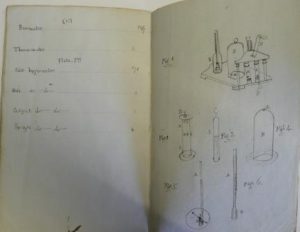
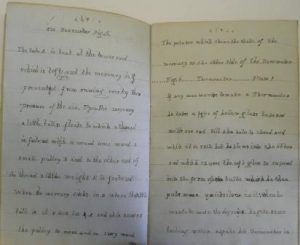
There were a great many beautifully written “Specimens of Writing” from June 1848. It was difficult to determine just a few to publish, however, the messages written in these handwriting practice sessions should hold true now as much as they did then…
Imitate virtuous characters, imitate good actions, gaming is dishonest, keep your promise, keep from vicious company, knowledge promotes and improves virtue, censure no person hastily, cancel animosities, honour the humane, fear accompanies deceit, envy is tormenting, do nothing rashly, civility is an indispensable qualification.

Joseph Rowntree June 1848
In 1826 Robert Foster worked on Greek Grammar and it was a delight to see his hard work in writing throughout this comprehensive workbook.

A useful book for use in schools – Chief Dates of History

Throughout such solid examples of academia it was enlightening to see religious documents and textbooks, nature studies and musical performances/theoretical studies.

This publication demonstrates the nature of sound and the manner in which they are magnified, or rather multiplied by the Tuba Stentoro-Phonica.
A wonderful note to end on was the discovery of this little gem – Observations De Salsedine Maris by Robert Boyle – Geneva 1686

